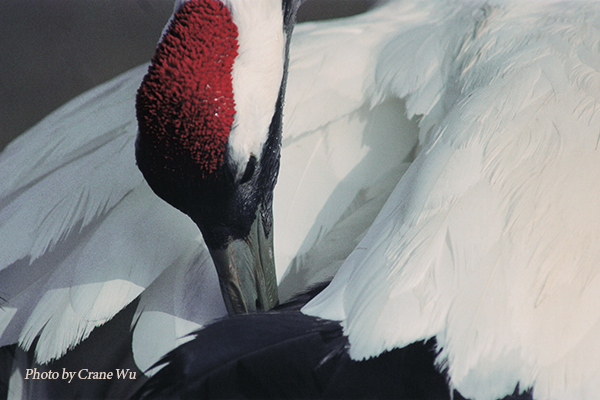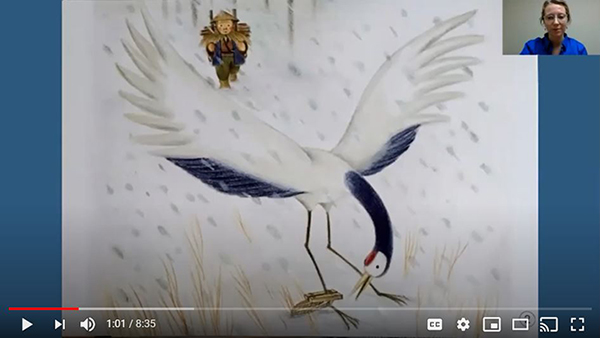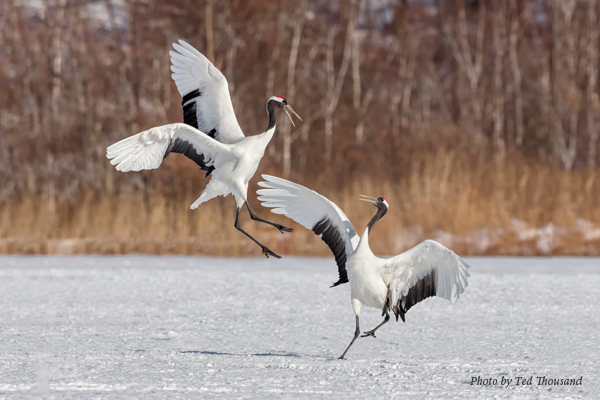
Welcome to Week 4 of Quarantine with Cranes! Over the next few months, the International Crane Foundation will provide activities for you and your loved ones to do from the safety of your home. This week’s activities focus on one of the world’s fifteen crane species, the Red-crowned Crane. See Week 3 of Quarantine with Cranes here.
Activity Description: The Red-crowned Crane is a large, rare crane species that live in Eastern Asia. Red-crowned Cranes have been important in Chinese, Russian, Japanese and Korean cultures for thousands of years. These cranes are said to represent longevity, fidelity, peace and luck. Despite their cultural significance, Red-crowned Crane populations are declining due to habitat loss caused by human activity. In this week’s activity, you will learn about these beautiful, endangered cranes, the impacts they have had on humans for centuries and the impacts humans have had on them.
Grades: 3-6
Time estimate: 1.5 to 2.5 hours
Topics covered: Language arts, social studies and art
Materials needed: Internet access, paper, markers, pen/pencil
Adult involvement: Might need to help with origami
Indoor or Outdoor: Indoor
Links:
The Crowned Crane’s Courtship Dance
The Grateful Crane: A Japanese Fairytale
YouTube: How to Make a Paper Cup
YouTube: Easy Origami Fish DIY
YouTube: How to Fold an Origami Crane
International Crane Foundation – Origami crane instructions
International Crane Foundation – Species Field Guide
Workplan:
Begin by watching the video: The Crowned Crane’s Courtship Dance. Feel free to watch it more than once. Use the video to answer the following questions:
How long do Red-crowned Cranes live?
What is their wingspan?
Why do cranes dance?
Is crane dancing loud or quiet?
Next, have your student investigate the meanings of the following words: longevity, fidelity, peace and luck. We suggest using a dictionary website like this one. Red-crowned Cranes are symbols for these four ideas in Japanese, Chinese, Korean and Russian cultures. For each of the four words, write down the definition, what the word means in your own words. Then think about why Red-crowned Cranes might signify these things. As an example, here is what this activity might look like for the word immortality:
Immortality: living forever. Red-crowned Cranes symbolize immortality because traditionally cranes are believed to live for 1,000 years. Even though they don’t actually live that long, they live longer than most other birds. This makes them seem “immortal” by comparison.
The next activity will use a video recording of an International Crane Foundation educator reading the Japanese fairy tale The Grateful Crane, or Tsuru no Ongaeshi. Here is the video you will use. Have your student watch the video and listen to the beautiful words of the story. After watching the video, spend 20 to 30 minutes writing a journal-style entry about your reactions to the story. Think about the following questions as you write:
What were some themes that you noticed in the story?
Which pictures were your favorite and why?
Did you expect it to end that way? Why or why not?
Is the ending happy, sad or both? Explain your answer.
Did you notice anything in the story related to the symbols (longevity, fidelity, peace and luck) that you investigated earlier?
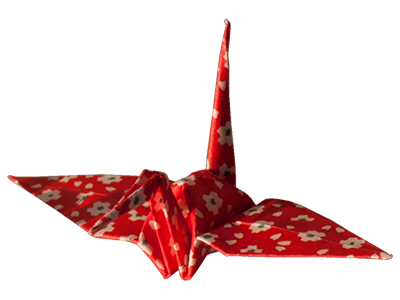 In last week’s edition of Quarantine with Cranes, we learned about origami, which is an ancient Japanese art of folding paper into shapes and figures. One of the most popular origami figures is the paper crane. Paper cranes were originally modeled after Red-crowned Cranes! This week, have your student practice some origami along with these video tutorials:
In last week’s edition of Quarantine with Cranes, we learned about origami, which is an ancient Japanese art of folding paper into shapes and figures. One of the most popular origami figures is the paper crane. Paper cranes were originally modeled after Red-crowned Cranes! This week, have your student practice some origami along with these video tutorials:
YouTube: How to Make a Paper Cup
YouTube: Easy Origami Fish DIY
YouTube: How to Fold an Origami Crane
The tutorials are in order of difficulty, so the cup is the easiest one, then the fish and finally the paper crane. Your student may want to try just one or all three – this is up to you. The video tutorials should make it easy to follow along, and you can always pause and rewind the videos if you get stuck on any of the steps. If you would rather read the steps, here are instructions on how to fold an origami crane from the International Crane Foundation.
Don’t have origami paper? No problem! The fish video begins with instructions on cutting a square piece of paper from a regular rectangular paper, in case you don’t already have square pieces of paper. Folding origami at any level can be challenging, so for an alternative activity, you can have your student draw a picture of a cup, a fish and a crane. Once you have folded or drawn your items, we would love to see photos of them! You can send these images to info@savingcranes.org or post them on social media with the hashtag #quarantinewithcranes.
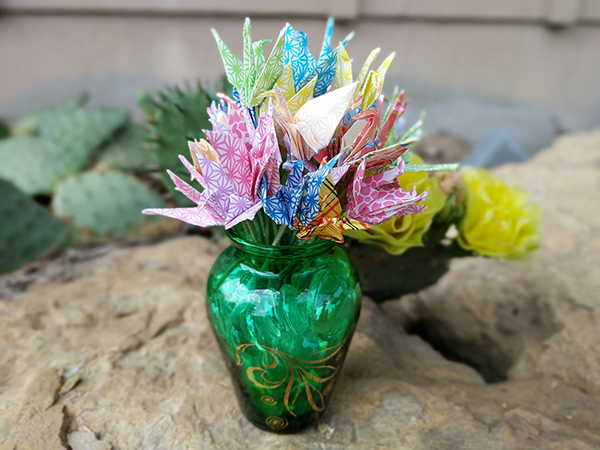
If you made a lot of cranes, you can turn them into a bouquet! Just attach pipe cleaners, skewers or toothpicks to your cranes and arrange them in a vase.
This week’s final activity will focus on something exciting that is happening in China in 2020, the Year of the Crane! The International Crane Foundation has partnered with the China Wildlife Conservation Association to promote 2020 as the Year of the Crane across the country and region. This partnership has been working on social media to distribute educational materials about cranes and crane conservation in China. When more people know about cranes, the more they want to help protect them! For endangered cranes like the Red-crowned Crane, this could help save the entire species.
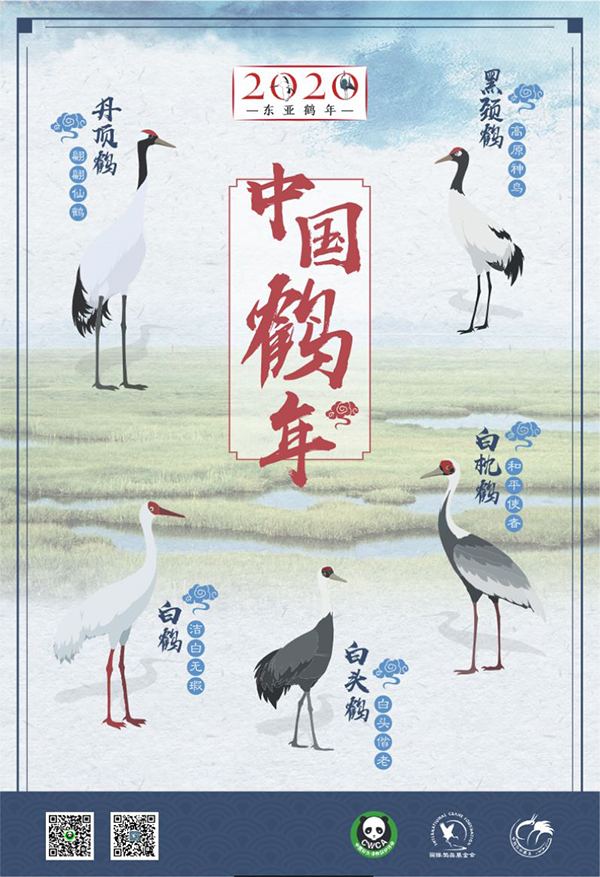
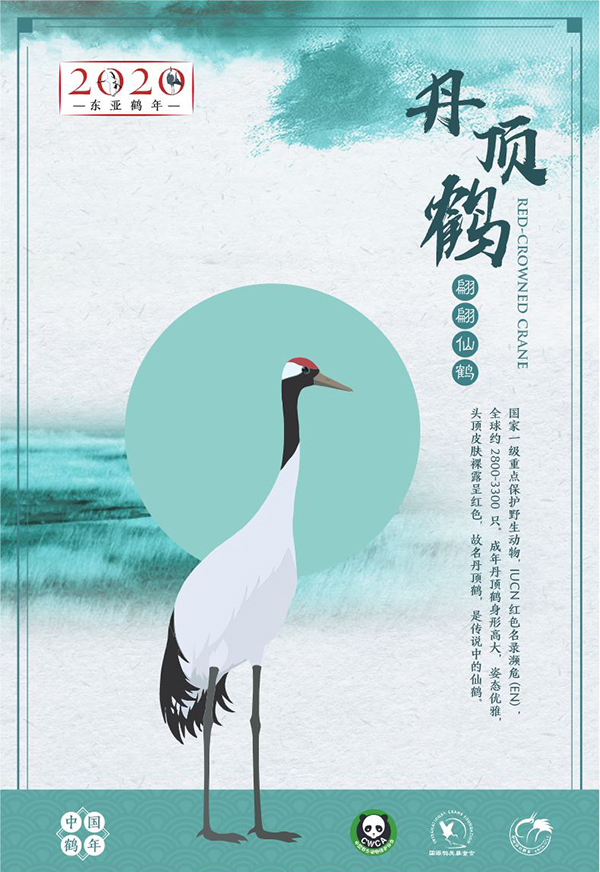
Using the above posters as a guideline, have your student create a “Year of the Crane” poster for their favorite crane. You can check out the International Crane Foundation’s website to find information and pictures of each of the crane species. Imagine they will be sharing this poster with someone who has never heard of that crane before. What information would they want to put on the poster?
What do you think? Please send your feedback to info@savingcranes.org. We would love to see photos of you and your kids learning about Red-crowned Cranes. We will see you next week for Week 5 of Quarantine with Cranes!
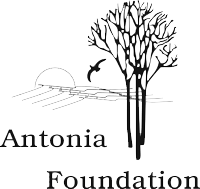 Quarantine with Cranes is made possible by the generosity of the Antonia Foundation.
Quarantine with Cranes is made possible by the generosity of the Antonia Foundation.

